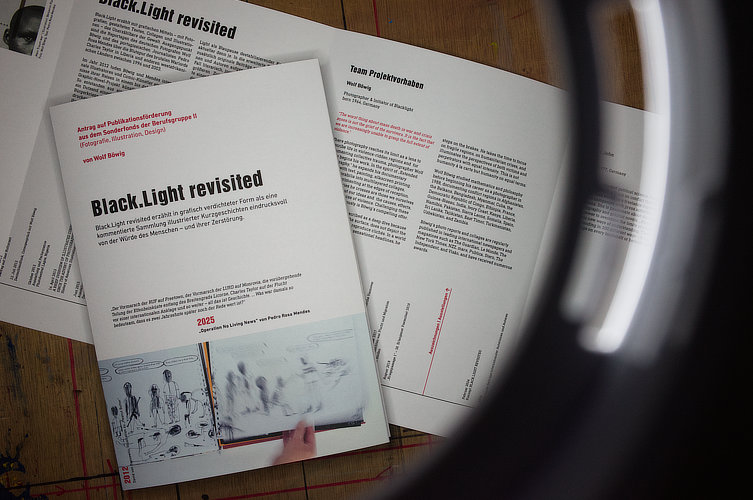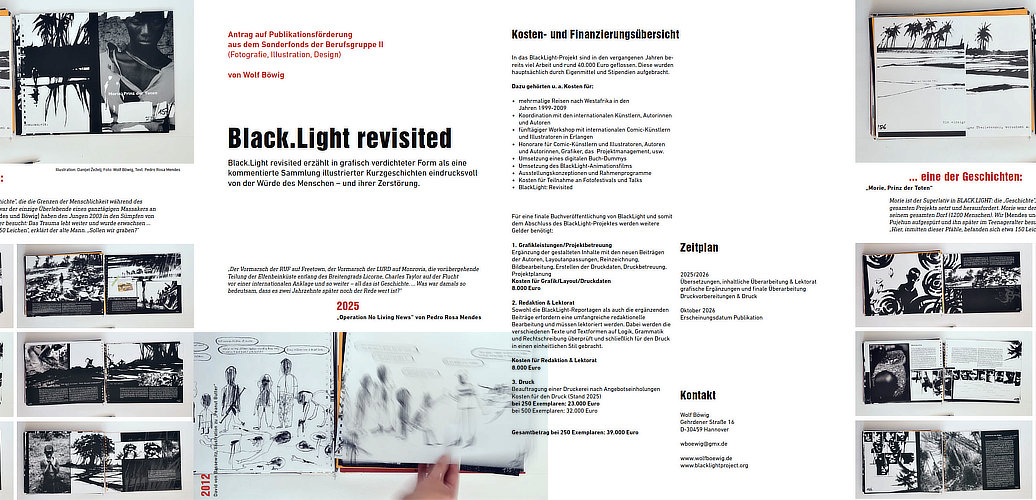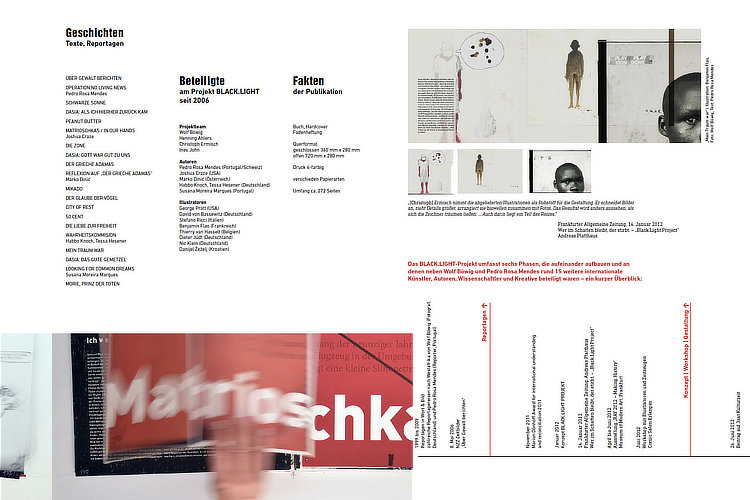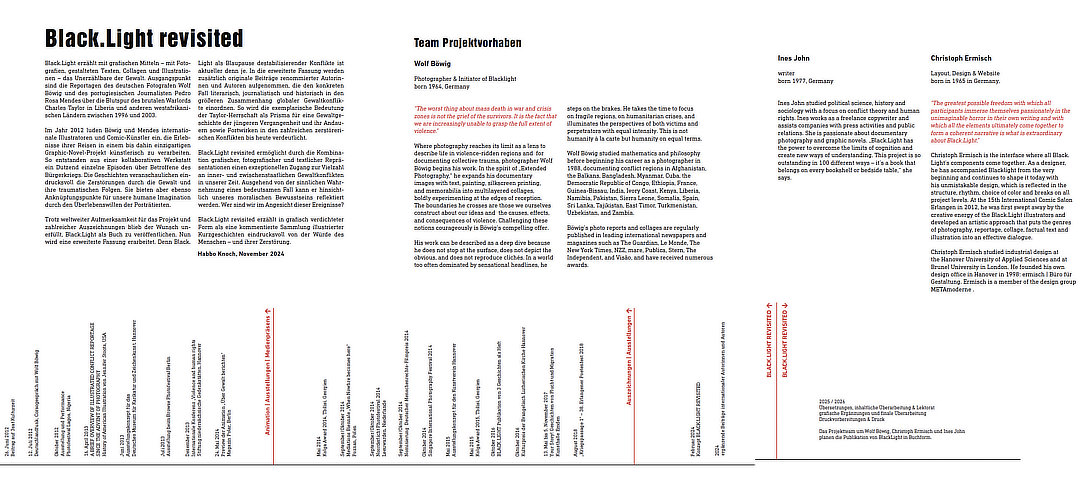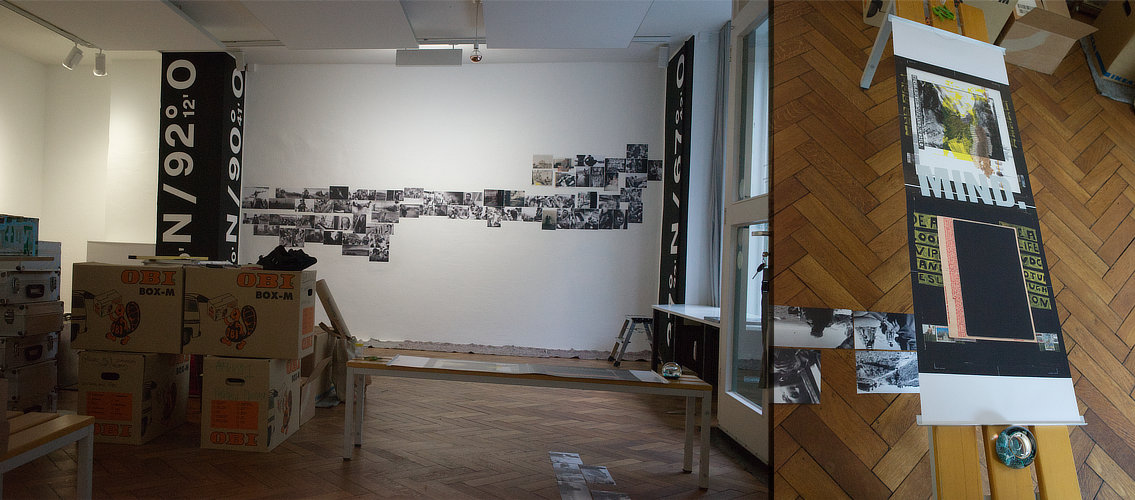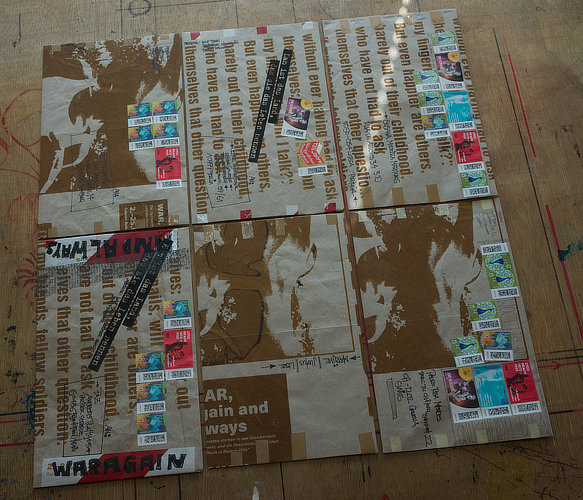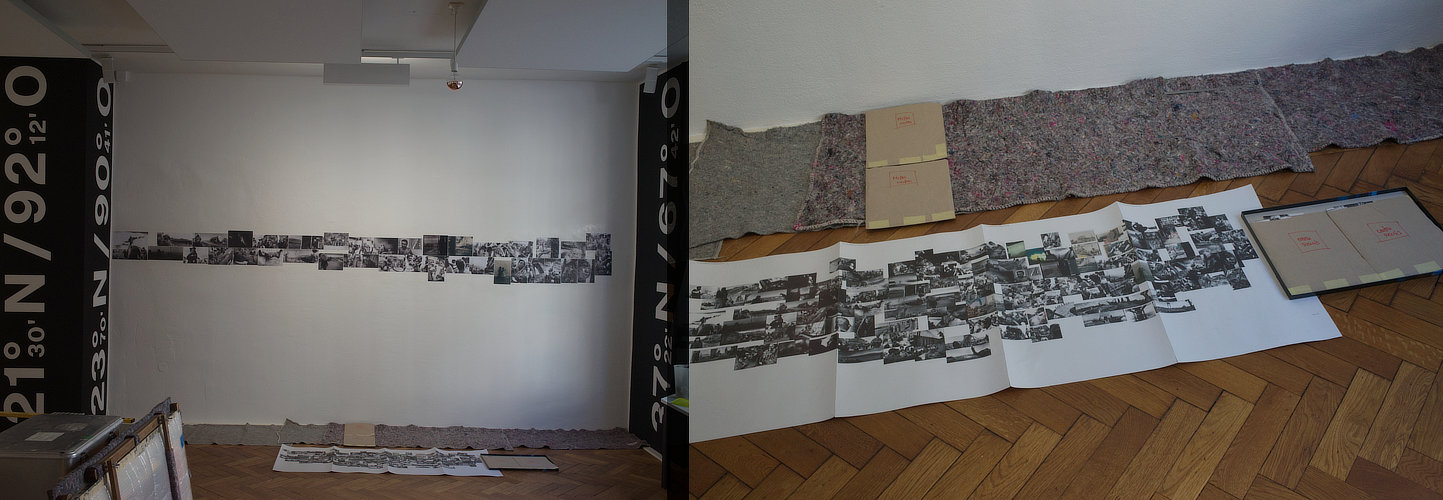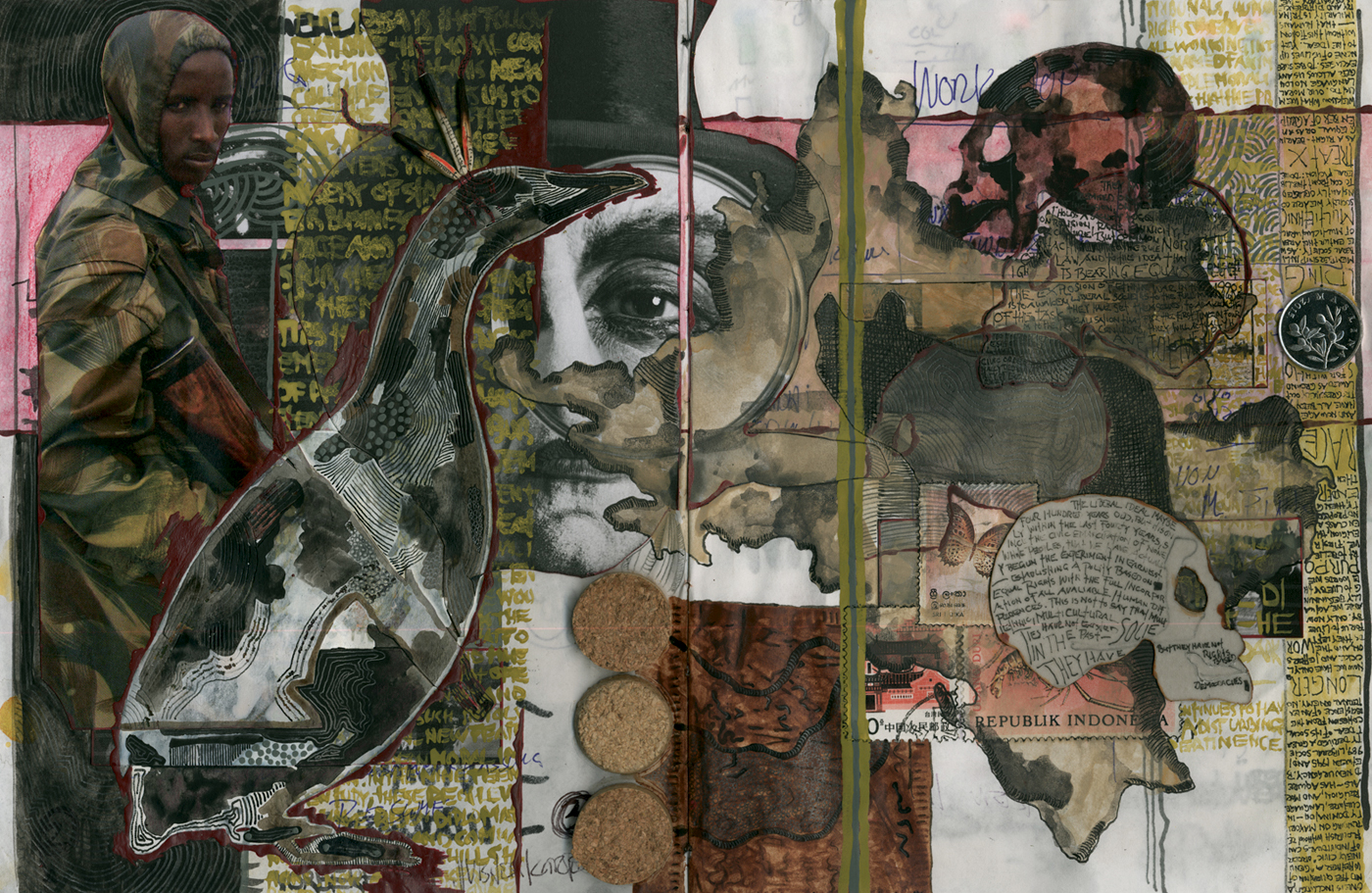
WAR, again and always
ERÖFFNUNG
Fr. 02.05. | 19:00 – Einführung von Judith Gerstenberg (19:30)
DISKUSSIONSRUNDE zum 80. »Tag der Befreiung«
Do. 08.05. | 18:30
ANIMATIONSFILM »Reporting Violence«, DEU 2014 + Gespräch
Do. 15.05. | 18:30
FILMVORFÜHRUNG »La Haine (Hass)«, Mathieu Kassovitz, FRA 1995
Do. 22.05. | 18:30
KÜNSTLERGESPRÄCH + BRUNCH&BUCH in residence
So. 25.05. | 16:00
LAUFZEIT
02.05. – 25.05.2025
ÖFFNUNGSZEITEN
Sa. – So. | 13:00 – 18:00
“
Rauschen gegenüber wortloser Stille in der Fotografie. Das Werk Wolf Böwigs ist ständig im Sturm. Immer respektvoll für die Menschen, ihre vergehenden Momente, ihre Namen. Wohin mit all dem Wissen, den Kontexten, ihren Geschichten – wohin mit sich selbst?
Ein Teil der Werke stellen künstlerische Interventionen dar, andere zeigen die thematische Ansprache im Kanon der Bilder über Krisengebiete und Kriege. Neben dem Dokumentarischen wird die mitfühlende Tiefe ausdrucksstark in umfassenden Collagen zur Stilsprache des Künstlers, zu seinem Forum und Refugium – einladend all dies zu teilen.
“
Arne K. Fischer | Galerie Bohai e.V.
–
Gedenkveranstaltung
Universität zu Köln, 25.04.2025
für Prof. Dr. Habbo Knoch
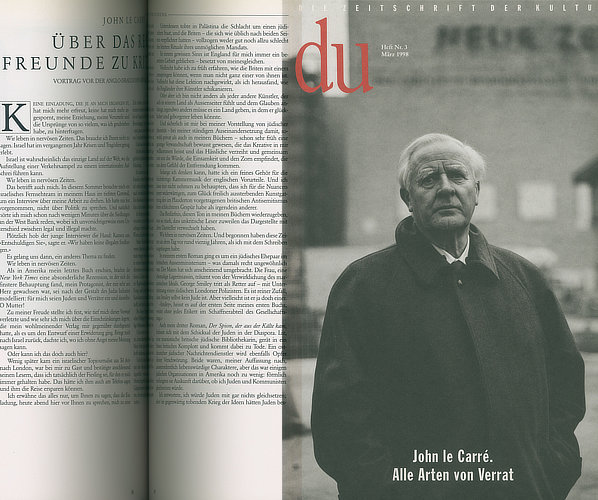
lost and found: John le Carré. Alle Arten von Verrat – du März 1998
“
Über das Recht, Freunde zu kritisieren
Vortrag vor der anglo-israelischen Gesellschaft London
…
Ende 1947 – die Asche des Zweiten Weltkrieges war noch nicht abgekühlt – gelang es mir, die noch ungeschönten Lager von Bergen-Belsen und Dachau zu besuchen. Und bis zum heutigen Tag gibt es nichts, kein Museum, keinen Film, wie gut sonst auch immer, nicht einmal ein Buch, das sich in der Wirkung mit dem lebendigen Eindruck vergleichen liesse, den diese Orte, nur zwei Jahre, nachdem dort die letzten Insassen umgebracht und die Überlebenden befreit worden waren, auf mich gemacht haben.
…
Diese gesichtslosen Menschen haben anscheinend vergessen, falls sie es denn je gewußt haben, dass das 20.Jahrhundert – oder irgendein anderes Jahrhundert – nicht von den Neinsagern, sondern von den Jasagern zugrunde gerichtet wurde. Von den Konformisten, …, denjenigen, die nichts zu sagen wagten oder Dinge sagten, die sie selbst nicht glaubten.
…
Ich bedaure sehr, dass ich auf sie gehört habe. Ich hätte mich niemals auf diese Korrektheitssprache und diese Gedankenpolizei einlassen sollen. Ich hätte sagen sollen: Ich weiß, wo mein Herz schlägt, ihr wißt es nicht. Ich hätte meine Gedanken und Gefühle aussprechen und mich jeder Kritik stellen sollen. Es gab einmal die Zeiten, als wir (als Schriftsteller) einander zusprachen, dass dies der einzig richtige Weg ist.
…
Die anständigen Nationen bilden eine Familie. Gute Männer und Frauen jeder Nation sind es einander schuldig, die Wahrheit gegen die zu verteidigen, die sie immer raffinierter zu manipulieren wissen.
…
„
John le Carré. Alle Arten von Verrat

Failing and Flying
Everyone forgets that Icarus also flew.
It’s the same when love comes to an end,
or the marriage fails and people say
they knew it was a mistake, that everybody
said it would never work. That she was
old enough to know better. But anything
worth doing is worth doing badly.
Like being there by that summer ocean
on the other side of the island while
love was fading out of her, the stars
burning so extravagantly those nights that
anyone could tell you they would never last.
Every morning she was asleep in my bed
like a visitation, the gentleness in her
like antelope standing in the dawn mist.
Each afternoon I watched her coming back
through the hot stony field after swimming,
the sea light behind her and the huge sky
on the other side of that. Listened to her
while we ate lunch. How can they say
the marriage failed? Like the people who
came back from Provence (when it was Provence)
and said it was pretty but the food was greasy.
I believe Icarus was not failing as he fell,
but just coming to the end of his triumph.
by Jack Gilbert from Refusing Heaven

Wo ist das Leben, das wir beim Leben verloren haben? Wo ist die Weisheit, die wir an das Wissen verloren haben? Wo ist das Wissen, das wir an die Information verloren haben sagte Eliot sagte Habbo sagte Thilo
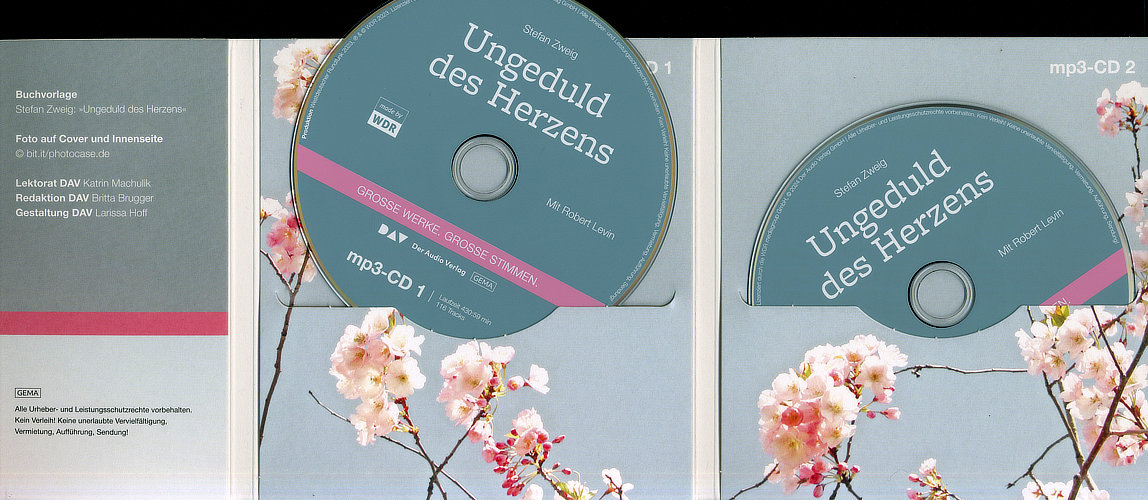
Ungeduld des Herzens – Stefan Zweig
„
…
Als Strafe, als gerechte Rache hätte ich es wahrscheinlich empfunden selber hilflos ein Krüppel zu werden. Beute jedes fremden Mitleids weil das Meine damals zu feige-, zu schwächlich gewesen war.
…
„
Der junge Soldat Hofmiller wird auf das Schloss des Herrn von Kekesfalva eingeladen. Die Abendgesellschaft ist ein voller Erfolg: Das Essen ist köstlich, der Wein erlesen, und Hofmiller gelingt es, eine amüsante Anekdote nach der anderen zum Besten zu geben. Betört von seinem Erfolg fordert er zum Abschluss des berauschenden Abends das Mädchen Edith, die Tochter des Schlossherren, zum Tanz auf. Doch Edith wird erst bleich und beginnt dann zu zittern; die Frauen, die sie flankieren, sind zutiefst geschockt. Hofmiller begreift, dass er einen Fauxpas begangen hat, aber erst als ihn Ediths Cousine aufklärt, dass Edith gelähmt ist, begreift er das Ausmaß seines Vergehens und flieht Hals über Kopf aus dem Schloss. Am nächsten Morgen schickt er einen Blumenstrauß, um sich zu entschuldigen und Edith kontert mit einer Einladung zum Tee. Schon bald ist Hofmiller täglicher Gast im Schloss, genießt die Gastfreundschaft der Familie und merkt nicht, dass sich die psychisch labile Edith unsterblich in ihn verliebt hat. Als Hofmiller die Wahrheit begreift, macht er ihr einen Heiratsantrag, doch als Edith erkennt, dass dies aus Mitleid geschehen ist, schlägt die anfängliche Freude in verzweifelte Wut und Rachsucht um…
»Ungeduld des Herzens«, der einzige Roman, den Stefan Zweig zu Ende schrieb, setzt sich mit der Frage auseinander, was wahres Mitleid ist, und wie schwierig es ist, wirklich mit einem anderen Menschen zu leiden.
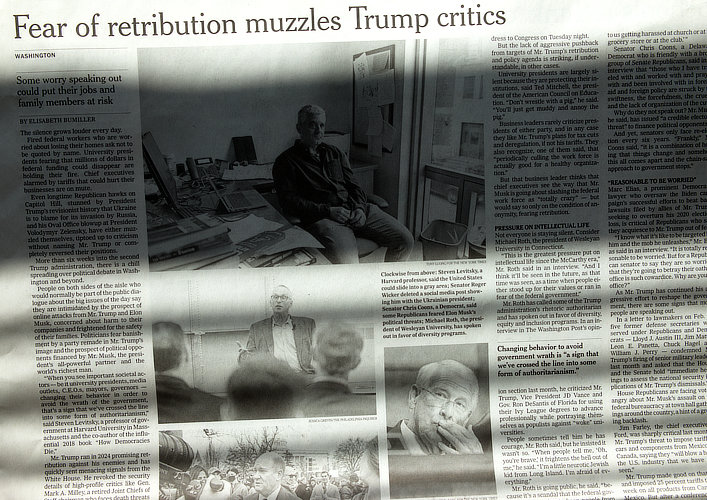
Fear of retribution muzzles Trump critics – march 8|9, Elisabeth Bumiller
„
…
„This is the greatest pressure put on intellectual life since the McCarthy era“ Mr. Roth said in an interview. „And I think it´ll be seen in the future, as that time was seen, as the time when people either stood up for their values or ran in fear of the federal government.“
…
“
Fear of retribution muzzles Trump critics
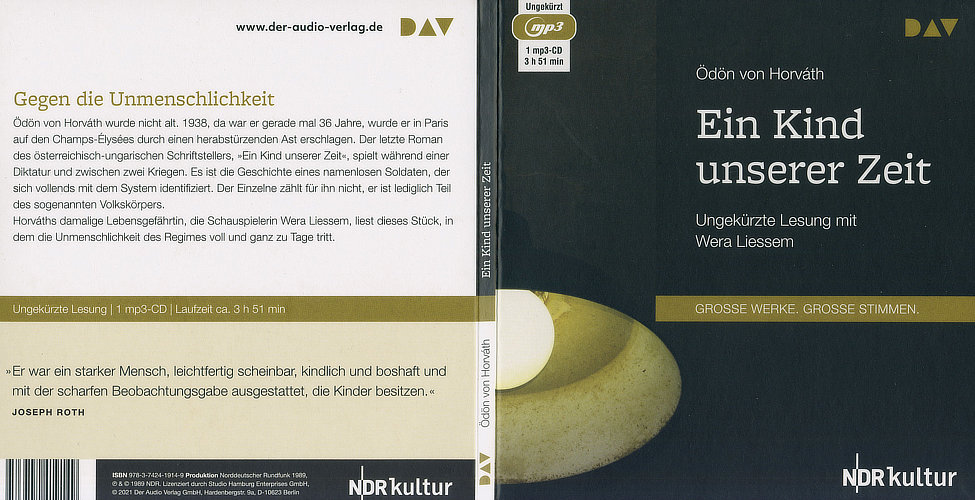
Ein Kind unserer Zeit – Ödön von Horváth
“
…
Einer nimmt sie aufs Korn und drückt ab – die Gestalt schreit auf und fällt. Es ist eine Frau. Jetzt liegt sie da. Ihr Haar ist weich und zart, geht es mir plötzlich durch den Sinn und einen winzigen Augenblick lang muß ich an das verwunschene Schloß denken. Es fiel mir wieder ein. Und nun geschah etwas derart Unerwartetes, daß es uns allen die Sprache verschlug vor Verwunderung.Der Hauptmann hatte sich erhoben und ging langsam auf die Frau zu – Ganz aufrecht und so sonderbar sicher. Oder geht er der Scheune entgegen?
Er geht, er geht – Sie werden ihn ja erschießen – er geht ja in seinen sicheren Tod!
Ist er wahnsinnig geworden?!
In der Scheune steckt ein Maschinengewehr – Was will er denn?! Er geht weiter. Wir schreien plötzlich alle: »Herr Hauptmann! Herr Hauptmann!« Es klingt, als hätten wir Angst – Jawohl, wir fürchten uns und schreien – Doch er geht ruhig weiter. Er hört uns nicht. Da spring ich auf und laufe ihm nach – ich weiß es selber nicht, wieso ich dazu kam, daß ich die Deckung verließ – Aber ich will ihn zurückreißen, ich muß ihn zurückreißen! Da gehts los – das Maschinengewehr.
Ich sehe, wie der Hauptmann wankt, sinkt – ganz ergeben – Und ich fühle einen brennenden Schmerz am Arm – oder wars das Herz? Ich werfe mich zu Boden und benutze den Hauptmann als Deckung.
Er ist tot.
Da seh ich in seiner Hand was Weißes – Es ist ein Brief. Ich nehm ihn aus seiner Hand und hör es noch schießen – aber nun schützt mich mein Hauptmann. »An meine Frau«, steht auf dem Brief. Ich stecke ihn ein und dann weiß ich nichts mehr.
…
“
Ein Kind unserer Zeit

march 31st
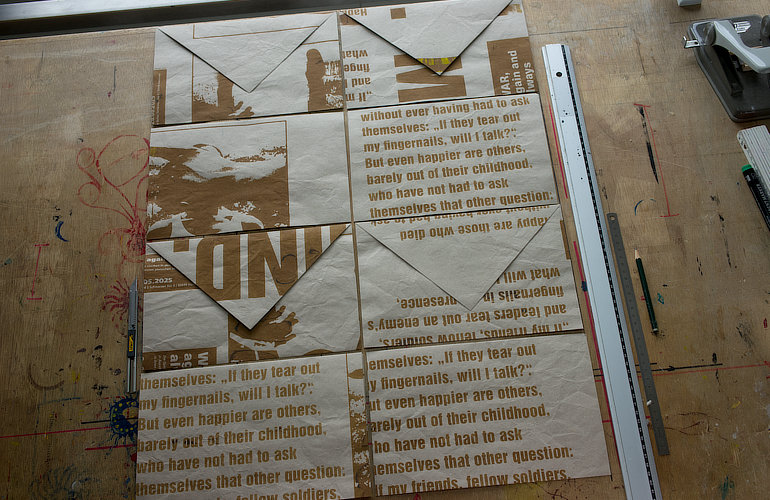
march 30th

envelopes – march 29th
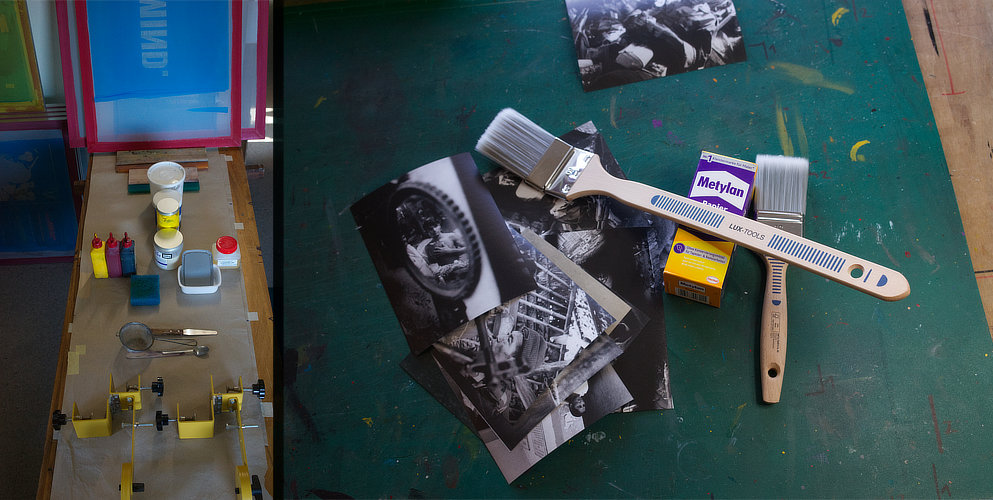
test screenprint&wallpaper – march 28th

march 26th
more …
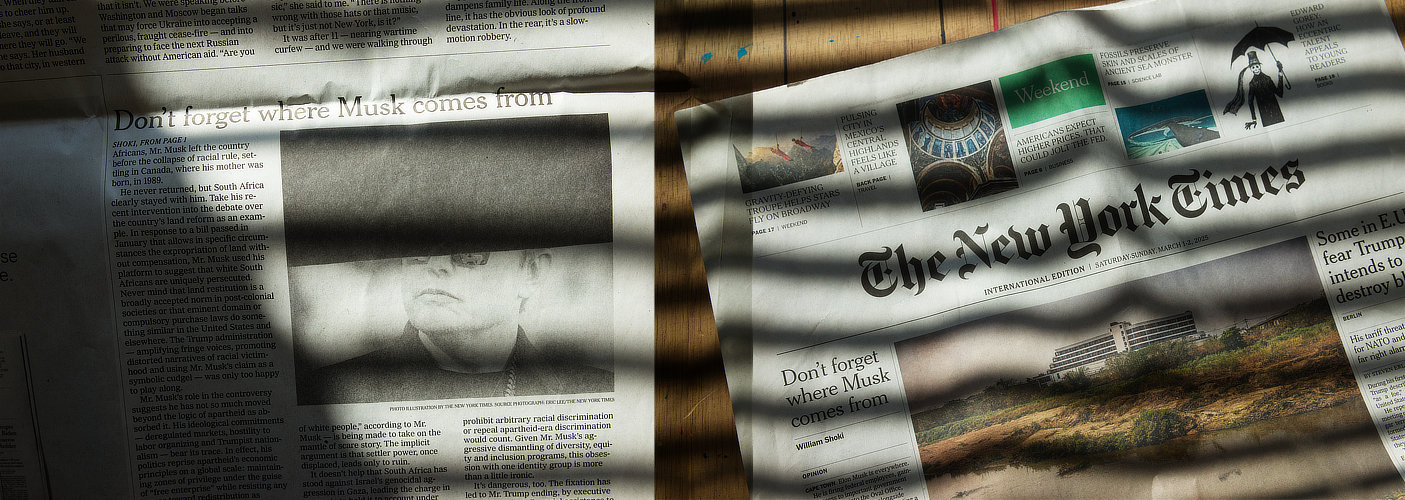
Dont forget where Musk comes from – march 1|2, William Shoki
“
…
The Moguls worldview is deeply rooted in his rearing in apartheid South Africa.
…
These men, such as Peter Thiel and David Sacks, emerged from a historical tradition that revered hierarchy and sought to sustain racial and economic dominance, only to find themselves in a world where that order was unraveling.
…
„
Dont forget where Musk comes from

Der transatlantische Westen ist ein Auslaufmodell – Herfried Münkler
Europa und die USA
Die USA haben schon vor Präsident Trump die Sicherheitsgarantien für Europa infrage gestellt, sagt der Politologe Herfried Münkler. Daran werde sich nach Trump nichts mehr ändern. Zum Schutz vor Russland brauche Europa daher gemeinsame Atomwaffen.
